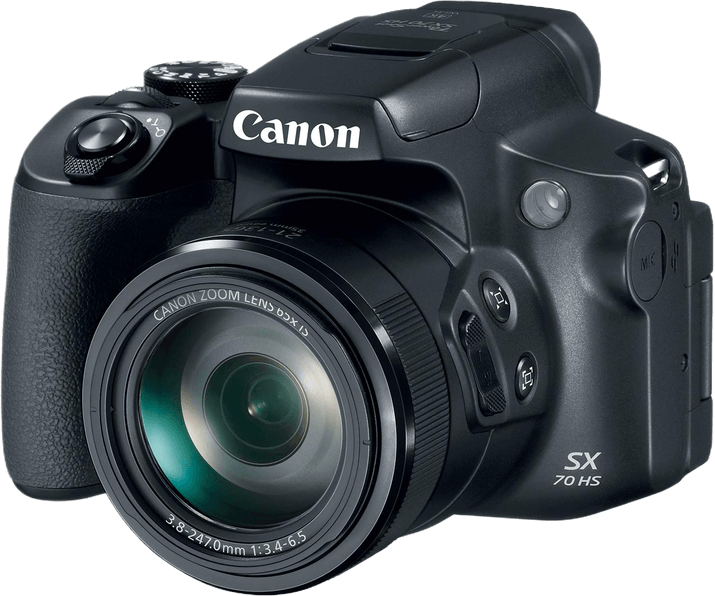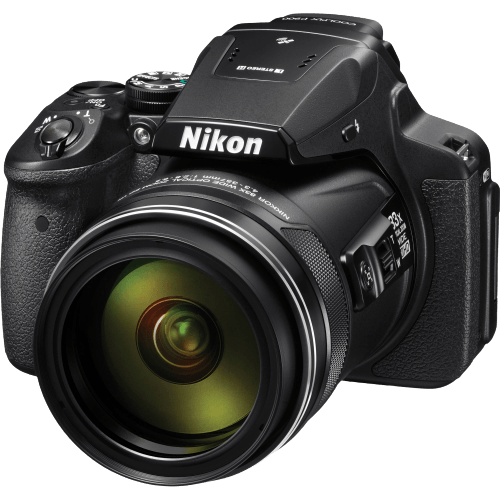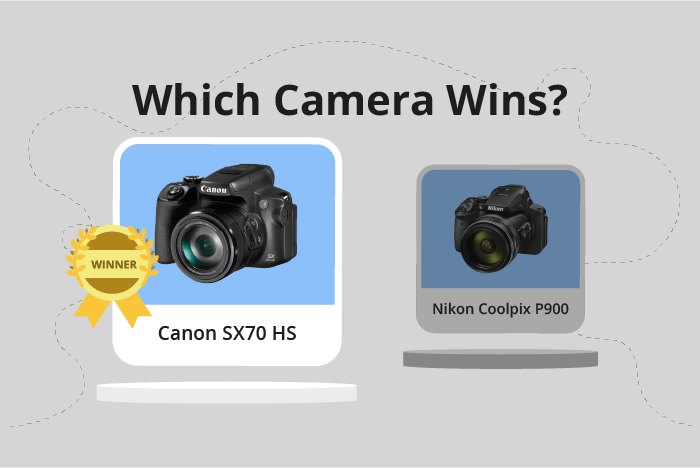Canon PowerShot SX70 HS vs Nikon Coolpix P900 Comparison
Canon PowerShot SX70 HS

Nikon Coolpix P900

The Canon PowerShot SX70 HS narrowly edges out the Nikon Coolpix P900 with a score of 49/100 compared to 48/100. Both cameras are bridge type and share similarities in launch price, with the Canon at $549 and the Nikon at $599. They also have comparable sizes, with the Canon measuring 127 x 91 x 117mm and the Nikon at 140 x 103 x 137mm.
The Canon SX70 HS stands out due to its lighter weight of 608g, making it more portable than the Nikon P900, which weighs 899g. Additionally, the Canon model is more recent, released in 2018, while the Nikon P900 was introduced in 2015. This gives the Canon an advantage in terms of updated technology and features.
Despite the close scores, the Canon PowerShot SX70 HS offers more benefits in terms of weight and release year, potentially making it a better choice for those seeking an up-to-date and portable bridge camera.
Canon PowerShot SX70 HS vs Nikon Coolpix P900 Overview and Optics
The Nikon Coolpix P900 outperforms the Canon PowerShot SX70 HS in optics with a score of 53/100 compared to 49/100. Both cameras share some common specifications, including a 1/2.3″ CMOS sensor, a fixed lens mount, and the absence of a lens mount due to their fixed lens design.
The Nikon P900 surpasses the Canon SX70 HS in several aspects. First, the P900 has a higher DXOMARK score of 72 for its sensor, whereas the SX70 HS only scores 58. This indicates that the P900’s sensor provides better image quality. Furthermore, the P900 features image stabilization, which helps capture sharper images by minimizing camera shake. The SX70 HS lacks this feature, making it more prone to blurred images due to hand movements.
On the other hand, the Canon SX70 HS has some advantages over the Nikon P900. It has a higher megapixel count of 20, compared to the P900’s 16 megapixels, which allows for larger prints and more detailed images. Additionally, the SX70 HS offers a faster shooting speed of 10 frames per second, while the P900 only shoots at 7 frames per second. The SX70 HS’s superior processor, the Digic 8, also contributes to its faster performance and better image processing.
Taking these factors into account, the Nikon Coolpix P900 proves to be the better option for those prioritizing image quality and stabilization. However, the Canon PowerShot SX70 HS may be more suitable for users who require higher resolution images and faster shooting speeds. Ultimately, the choice between the two cameras will depend on the individual’s specific needs and preferences.
Canon PowerShot SX70 HS vs Nikon Coolpix P900 Video Performance
The Canon PowerShot SX70 HS outperforms the Nikon Coolpix P900 in terms of video capabilities, with a score of 91/100 compared to the P900’s 61/100. Both cameras share some common features, such as built-in time-lapse functionality, which allows for creative and dynamic video capture.
The Canon SX70 HS excels in video quality, offering a maximum video resolution of 4K (3840 x 2160), while the Nikon P900 only reaches standard HD (1920 x 1080). This difference in resolution means that the SX70 HS can capture more detailed and higher-quality footage. Additionally, the SX70 HS has a maximum video frame rate of 120fps, double that of the P900’s 60fps. This increased frame rate allows for smoother and more fluid video capture, as well as the ability to create slow-motion footage.
Despite its lower score, the Nikon Coolpix P900 does have some advantages in its video capabilities. However, the specific advantages are not provided, and without this information, it is difficult to determine how the P900 is better. Nevertheless, it is important to consider other factors, such as price and user needs, when evaluating which camera is more suitable for a specific user.
The Canon PowerShot SX70 HS’s higher video score, 4K resolution, and higher frame rate make it the superior choice for video capabilities. However, potential buyers should also consider their own requirements and budget before making a final decision.
Canon PowerShot SX70 HS vs Nikon Coolpix P900 Features and Benefits
The Canon PowerShot SX70 HS wins the features comparison with a score of 54/100, while the Nikon Coolpix P900 scores 41/100. Both cameras share some specifications, such as a 3-inch screen size, screen resolutions of 922,000 and 921,000 dots for the Canon and Nikon respectively, and the lack of a touchscreen. Both cameras also have a flip screen and WiFi capabilities.
The Canon PowerShot SX70 HS outperforms the Nikon Coolpix P900 in some areas. The SX70 HS has a slightly higher screen resolution, which provides a marginally better image preview. Additionally, the SX70 HS has Bluetooth connectivity, which allows for easier pairing with compatible devices and remote control options.
On the other hand, the Nikon Coolpix P900 has a GPS feature that the Canon PowerShot SX70 HS lacks. This feature enables the P900 to record geographical information, which can be useful for organizing and categorizing photos based on location.
In terms of features, the Canon PowerShot SX70 HS is the better camera due to its higher score, which results from a slightly superior screen resolution and the addition of Bluetooth connectivity. The Nikon Coolpix P900, however, has the advantage of GPS functionality for those who value geotagging capabilities. Ultimately, the choice between these two cameras will depend on the specific needs and preferences of the user, with the SX70 HS offering a more versatile feature set and the P900 catering to location-based photography.
Canon PowerShot SX70 HS vs Nikon Coolpix P900 Storage and Battery
In comparing the Canon PowerShot SX70 HS and the Nikon Coolpix P900, both cameras have a storage and battery score of 21/100. They share identical storage specifications with one memory card slot each, accepting SD, SDHC, and SDXC memory cards. Neither camera has USB charging capability.
The Nikon Coolpix P900 has a slightly better battery life, providing 360 shots per charge using its EN-EL23 battery. In contrast, the Canon PowerShot SX70 HS offers 325 shots per charge with its LP-E12 battery. This advantage gives the P900 an edge in terms of longer shooting sessions without needing to replace or recharge the battery.
However, the Canon PowerShot SX70 HS does not have any advantages over the Nikon Coolpix P900 in terms of storage and battery. Both cameras have the same storage capabilities and a similar battery life, with the P900 having a slight edge.
Taking these factors into consideration, the Nikon Coolpix P900 emerges as the superior option for storage and battery life. However, the difference between the two cameras is minimal, and both provide adequate performance in these aspects.
Canon PowerShot SX70 HS vs Nikon Coolpix P900 – Our Verdict
Are you still undecided about which camera is right for you? Have a look at these popular comparisons that feature the Canon PowerShot SX70 HS or the Nikon Coolpix P900:
- Nikon Coolpix P900 vs Coolpix P950
- Canon PowerShot SX70 HS vs Panasonic Lumix DMC-FZ2000 / FZ2500
- Canon PowerShot SX70 HS vs Nikon Coolpix B500
- Canon PowerShot SX70 HS vs Panasonic Lumix FZ80 / FZ82
- Canon PowerShot SX70 HS vs PowerShot SX740 HS
- Nikon Coolpix P900 vs Panasonic Lumix DMC-FZ2000 / FZ2500

